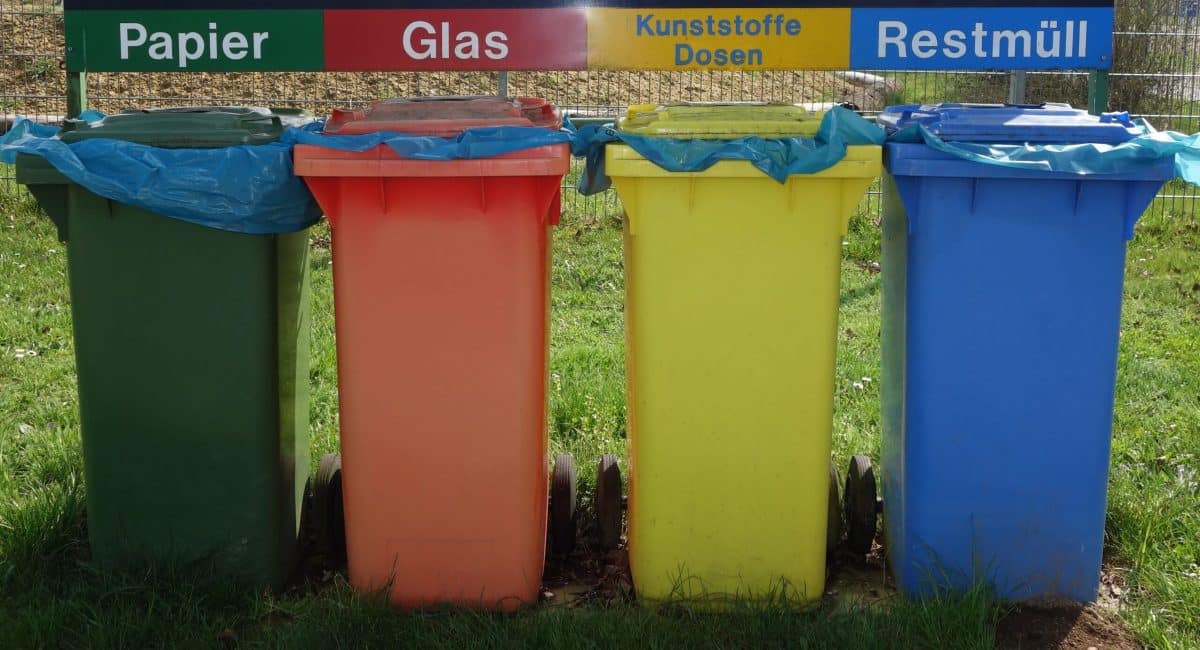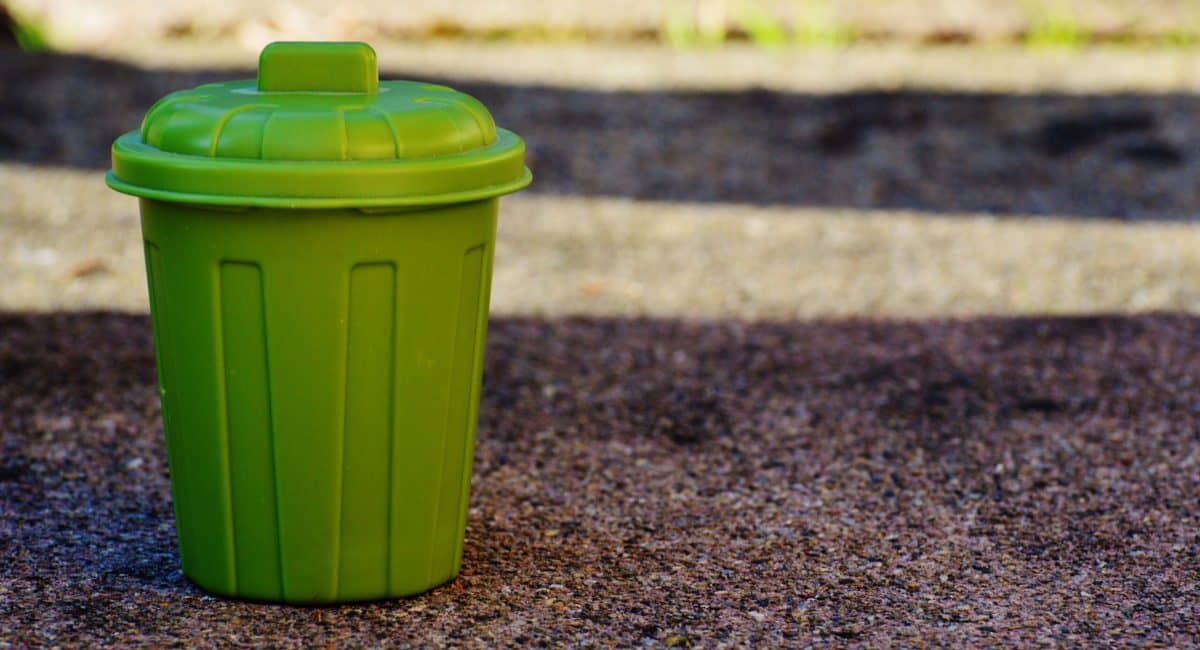How Does Recycling Work?
By Chiara Covone
I am in the kitchen preparing dinner for my family and I look at the many plastic packagings, mixed materials, Tetrapack packages that I have to dispose of.
I feel overwhelmed by the responsibility of doing the right thing… Here in Sweden, we sort plastic packaging from cardboard, Tetrapack counts as cardboard packaging, organic goes in a separate paper bag, magazine and newspaper is separate and the list goes on.
But do I need to clean it before putting my packages in the recycle bins? And how much do I need to clean them? Is contaminated cardboard packaging recyclable? Because I understand that pizza boxes bottom should not be put into the recycle bin since the grease makes it not recyclable? Who is going to sort my recycling bins after I drop them at the recycling station? Will all this work I do be wasted and everything will end up in the incinerators? I cannot help but wanting to find out more.
Can Incineration of Waste be the Answer?
Here in Sweden, waste management is very fractioned: you have food waste and then up to 18 different fractions, e.g. cardboard, newspapers, plastic packaging, coloured glass, transparent glass, … and the list goes on.
it is very common that Swedish households separate their waste. But it was not always like that. 25 years ago Swedes sent 40% of their household waste to landfill; this figure has now dropped to less than 1%!
Today, 45% of the household waste is recycled and another 45% is incinerated to generate electricity and heat houses.
Incinerating waste is a controversial topic because of the pollution it creates. In Sweden, they defend their policy claiming that the controls are very rigorous and the standards very high and that therefore, as a source of energy, waste incineration is very well positioned.
They are not hiding the fact that there is CO2 emissions when burning plastic but that is still better compared to have plastic ending as landfill with dangerous metangas production.
Still, incineration is not favoured by many environmentalist and, anyway, is not a very widespread practice.
What happens to the collected materials in other countries?
“The miracle material has made modern life possible. But 40% is only used once and is chocking our waterways.”




The Disruption in End Markets for Recycling
Countries are relying on others for recycling, trusting that somebody else is going to do it for us.
Just until a few years ago the business of trading waste seemed to suit everyone. Many countries like the US or the EU where sending their waste abroad; partially because labor was cheaper than at home. This practice allowed them to meet national recycling targets.
The idea was that the scrap paper and plastic would be reused to make new products like shoes or bags; in theory this was good for countries, like for example Indonesia, as it created jobs and grew their economy.
But the reality was less charming.
Most paper companies started receiving paper scrap mixed with plastic waste. The reason behind this is that, to import plastic waste into, say, Indonesia, importers have to obtain 3 recommendations; but to import paper they need only 1 recommendation from the ministry of industry. The result is that, in Indonesia, a lot of paper waste comes mixed with plastic waste. This additional waste is mostly unwanted by the paper companies. So they “donate” it to the community.
The result is tons of abandoned plastic waste.
Mountains of piles of plastic waste.
People locally would burn the old waste. Every corner is full of black smoke. Some people take the abandoned plastic and burn it to extract parts (e.g. metal parts) that they can then sell.
Tofu makers also saw an opportunity to reduce their operational costs: they bought the unwanted plastic and replaced expensive wood with cheap plastic as cooking fuel. Nobody told them that burning plastic is dangerous.
Tested chicken eggs collected close to where they burn plastic found high level of dioxide, a dangerous chemical linked to the development of cancer.
None of this is what we have in mind when we sort our garbage in our homes.
We should all be alarmed to learn that the garbage we separate in our homes could end up in those poor neighbourhood, with chemicals emitted being breathed by uninformed victims.
Many of our countries rely on systematic shipment of waste abroad for processing, and often this includes countries that don’t have the facilities nor the controls in place to deal with the world waste adequately and correctly.
For years, China has been the single largest buyers of recyclable materials: the European Union exported over 95% of its plastic to China, and the US and the EU are the largest exporters of recovered paper into China. China consumed over 50% of the world’s recycled paper and plastic in 2016.
But then things started to change. In 2017, China took a series of steps, including establishing bans and imposing strict quality standards, to restrict recyclable materials imported into China. These measures resulted in significant impacts on recycling all over the world.
The impact was dramatic.
Recyclers searched desperately for outlets for their waste, other countries began then to accept this waste. However, many of the countries were quickly overwhelmed by the quantity and began imposing their own restrictions. Costs have increased and revenues decreased.


Return to Sender
Similarly to China and other South Asian Countries, Indonesia is getting out of the recycling business. Cargos full of waste from richer countries are being sent back to their origin countries.
Indonesia has to face its own internal challenges; and they are waking up to a vicious circle they are part of, which is affecting their own ability to move to correct and impactful waste management.
In fact, 81% of domestic garbage is unsorted in Indonesia. And unsorted garbage is much harder to recycle.
If you add the tons of unusable contaminated (mixed) waste that comes from overseas to the domestic garbage, it seems quite obvious that the current model of recycling has to be challenged.
How did we get here?
The miracle material has made modern life possible. But 40% is only used once and is chocking our waterways.
We are addicted to Single Use Plastic. And recycling practices have made it easy for us to consume Single Use Plastic.
In fact, the option of recyclability seems to drive us to consume even more of it! Various studies of consumer behaviour indicate that the existence and visible presence of a recycling option eases the guilt of consumption and you are, therefore, likely to take/use more than you need. But truth is, recycling is not always the best option for the environment.
First of all, a lot of plastic is not recyclable at all (with today’s available technology) or it is very hard to recycle.
In addition, virgin plastic is so cheap and widespread that any recycled plastic has, today, a very hard time to compete.
And future projected production of virgin plastic makes me worry.
Plastics production has increased significantly over the past 50 years: from 15 million tonnes in 1964 to 311 million tonnes in 2014, and is expected to double again over the next 20 years, as plastics come to serve increasingly more applications.
Currently, packaging represents 26% of the total volume of plastics used. This is partially because of economic benefits, but also, very importantly, plastic contributes to resource productivity: it reduces food waste by extending shelf life and, thanks to its light weight, reduces the total fuel consumption during transport.
But here are the drawbacks: only 14% of plastic packaging is collected for recycling and, after sorting, only 5% is actually processed for recycling. What gets recycled is mostly ‘down-cycled’ , which means that it is recycled into lower-value applications that usually cannot be recycled again after use.
Each year, 8 million tons of plastic leak into the oceans, which is equivalent at an entire truck of garbage damped into the ocean EVERY MINUTE! At this pace, as you will have already heard, by 2050, there will be more plastic than fish in our oceans (by weight).
Recycling is not the solution.
The solution has to be found at the source: designing for circularity; designing for packaging to never become waste.
Given the advantages of plastics, the likelihood of companies deciding to eliminate the use of plastic packaging all together is rather low. However, we can reduce, challenging the single-use by default mindset wherever possible, and consider substituting with other materials.
Reduce, Reuse, Recycle
There is significant material and labor cost associated with recycling. And, what needs to be corrected, is a wasteful practice. Recycling should not be a goal in itself. The ambition should be to leverage the resources we extract with no waste and no harm to the environment.
In an average grocery store today, 40% of the plastic packaging cannot be recycled. It is all the industry leaders and influencers that can and have to make the change: by challenging traditional way of thinking and start designing for circularity.
Reusable packaging is a critical part in the search for a solution for the plastic pollution. As part of the New Plastic Economy Global Commitment , over 400 organisations have recognised that, wherever relevant, reuse business models should be explored to reduce the need for single use plastic. At the end of 2019, 43 signatories of the Commitment had active pilots in place.
Digital technologies and shift of consumer preferences gives us today the opportunity to make this huge impact possible; and you and I have a critical role to play here.
Never Miss an Update!
Sign up to receive my Newsletter and Get Inspired and Empowered on
Innovation Management & Customer Insights

One Response
How do you feel about recycling? What ideas did this article spark? Leave me a comment – I would love to hear your thoughts!